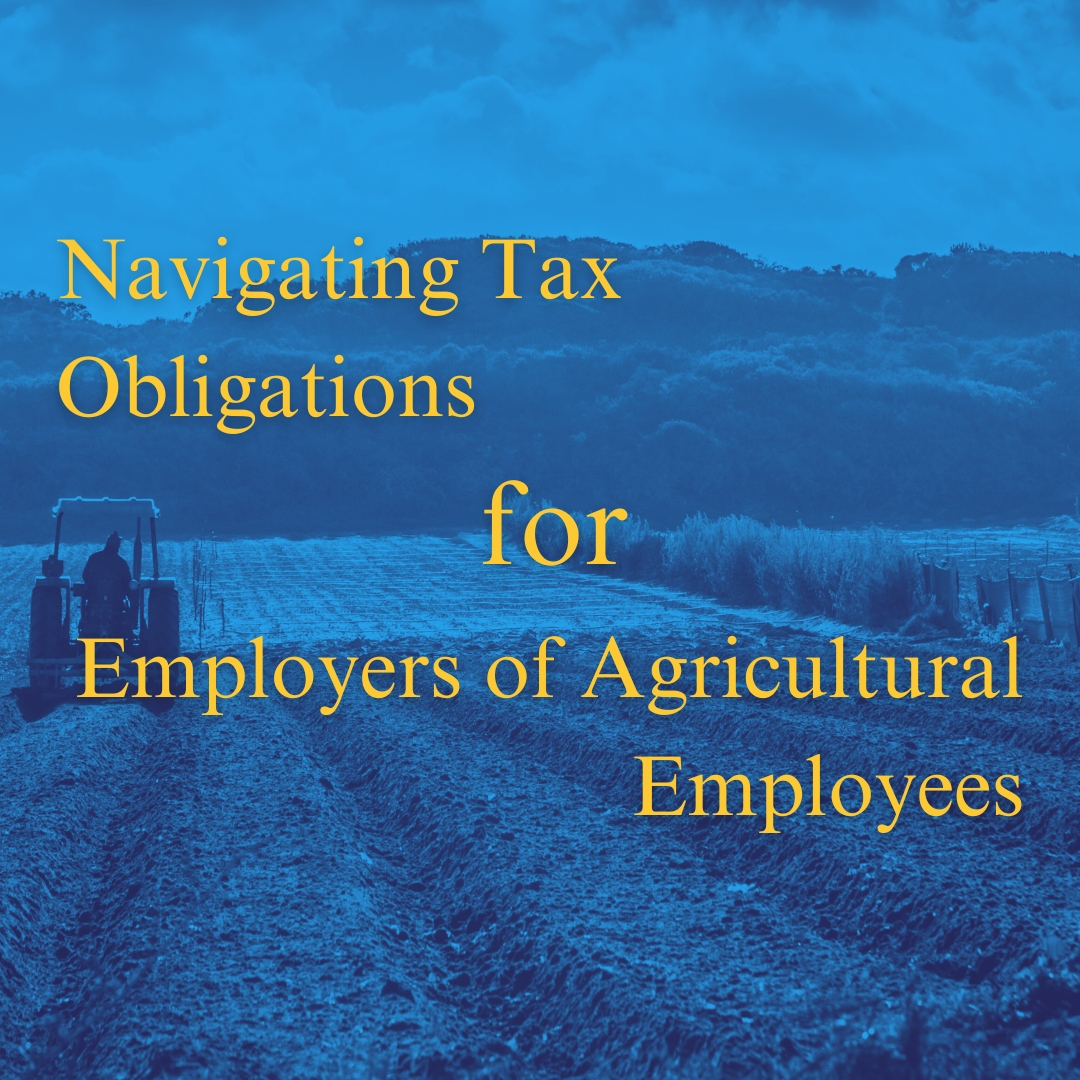
In the complex landscape of U.S. tax regulations, employers of agricultural workers face unique challenges in compliance, especially when it involves tax obligations like filing Form 943 and managing H-2A visa workers’ taxes. Here’s a comprehensive guide to help employers understand these responsibilities:
Filing Form 943: The Basics
Employers must file Form 943, Employer’s Annual Federal Tax Return for Agricultural Employees, if they pay wages subject to federal income tax withholding, Social Security, and Medicare taxes. This applies if:
- An employee earns $150 or more in cash wages in a calendar year, or
- The total wages paid to all farm workers reach $2,500 or more in non-cash and cash wages.
The filing deadline generally falls by January 31 following the year wages were paid, with a delay to February 10 if all taxes were timely deposited.
Deposit Schedules and Electronic Funds Transfer
Understanding the deposit schedule is crucial for timely tax compliance:
- Monthly vs. Semiweekly Depositors: Based on a look back period (two years prior), employers with less than or equal to $50,000 in tax reported are monthly depositors. Those exceeding this amount shift to a semiweekly schedule.
- $100,000 Liability: If at any point your tax liability hits $100,000, you must deposit by the next business day and switch to semiweekly deposits for the remainder of the year and the next.
Employers must use EFTPS (Electronic Federal Tax Payment System) for deposits, ensuring payments are made by 8 p.m. Eastern Time the day before they’re due.
Special Considerations for H-2A Visa Workers
Employers hiring foreign agricultural workers under the H-2A visa program face distinct tax scenarios:
- Exemption from Social Security and Medicare Taxes: Wages paid to H-2A workers are exempt from these taxes, simplifying some aspects of payroll.
- Income Tax Withholding: While income tax isn’t mandatory to withhold, it can be done voluntarily with mutual consent, requiring a Form W-4 from the worker.
- Form W-2 Reporting: Employers must issue Form W-2 for H-2A workers if they earn $600 or more, but no Social Security or Medicare information should be included.
- Backup Withholding: If an H-2A worker doesn’t provide a valid TIN, backup withholding at 24% applies. This scenario necessitates Form 1099-MISC and Form 945 filings, not Form 943.
Employer Liabilities and Compliance Risks
Failure to comply with these tax regulations can lead to significant penalties. For instance, not withholding backup tax when required can make the employer liable for the unwithheld amount. Thus, understanding and meticulously adhering to these tax obligations is not just about compliance but also about avoiding financial penalties.
Conclusion
For employers in the agricultural sector, particularly those utilizing H-2A workers, navigating through Form 943 requirements and the nuances of H-2A tax treatment is essential. Proper management of these obligations ensures legal compliance, avoids penalties, and maintains smooth operations. Employers are encouraged to consult with tax professionals for personalized advice, especially given the evolving nature of tax laws. This guide aims to provide a foundational understanding, but each employer’s situation might require tailored advice.
Disclaimer: The information provided above is not meant to be legal or tax advise. You should consult your CPA and attorney to determine the best course of action for your situation.
Mitzi E. Sullivan, CPA is a cloud based professional services provider
specializing in cloud accounting.